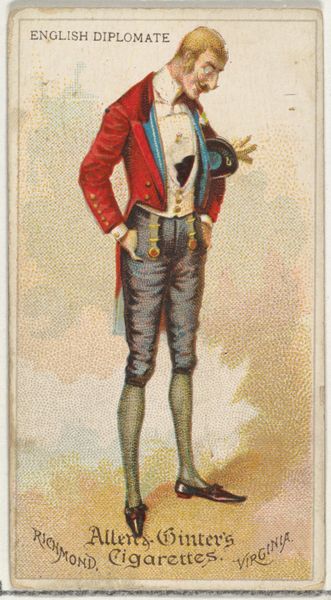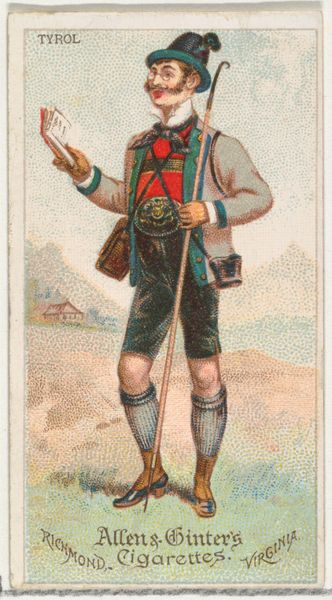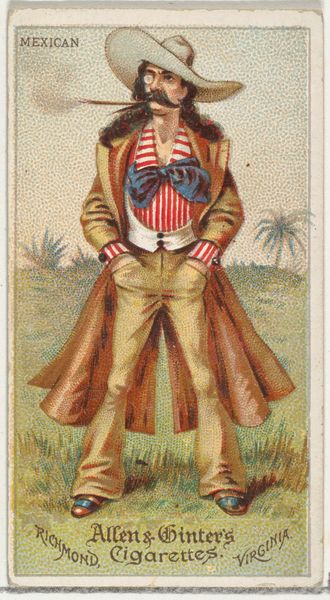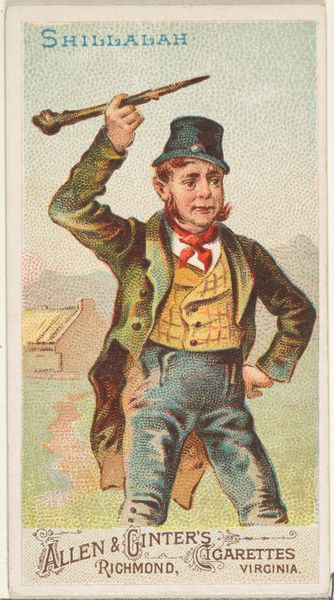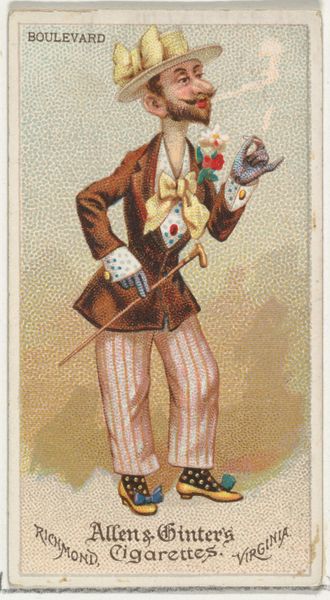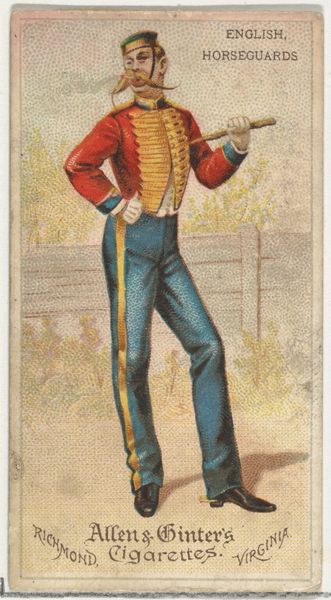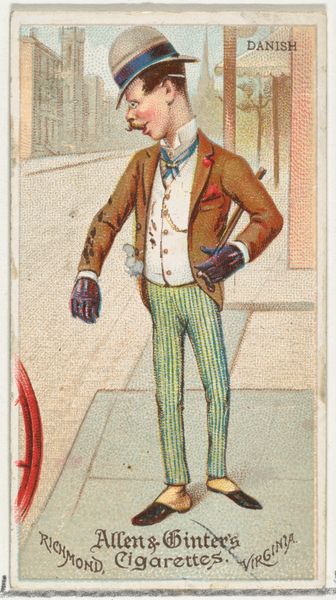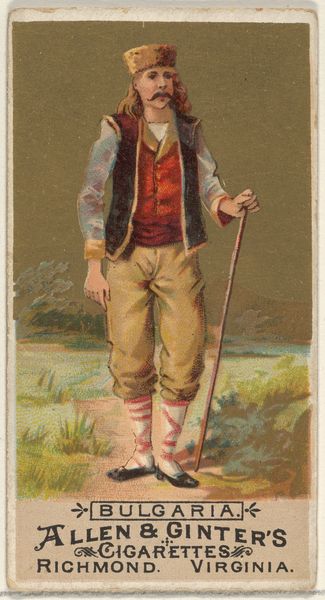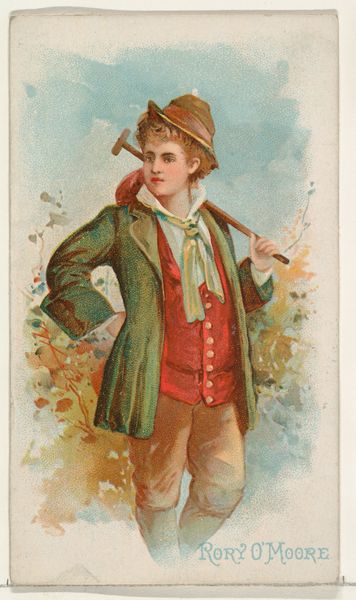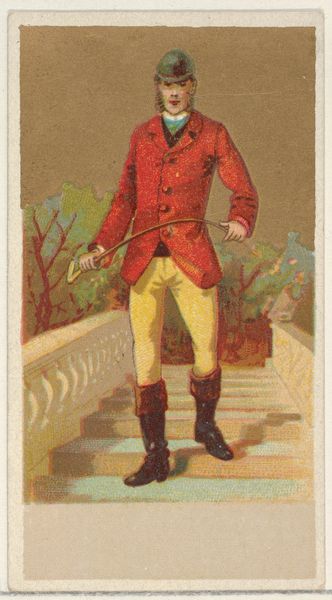
Irish, from World's Dudes series (N31) for Allen & Ginter Cigarettes 1888
0:00
0:00
Dimensions: Sheet: 2 3/4 x 1 1/2 in. (7 x 3.8 cm)
Copyright: Public Domain
Editor: This is "Irish, from World's Dudes series (N31) for Allen & Ginter Cigarettes," dating back to 1888. It seems to be a drawing or print, and the materials listed include colored pencil and etching. It's a somewhat strange little piece. What strikes you about it? Curator: Immediately, I'm drawn to the context of its creation: as a cigarette card. Think of the labor involved. The etching process, the colored pencil application, then mass production for commercial purposes. It collapses the high/low art divide by being both an "original" artwork and a commodity object circulating within a consumerist society. Editor: So, you're saying its value isn’t just aesthetic, but resides in the process and how it was used? Curator: Precisely! The image itself exoticizes an Irish archetype for the consumption of American cigarette smokers. Notice the title: “Irish.” Not a person, but a type. What materials contributed to constructing and perpetuating this idea? The paper, the ink, the printing press… these all played a role. Editor: It makes you wonder about the unseen workers involved in production, and how their labor relates to this idealized image of Irish identity. Curator: Absolutely. It’s crucial to examine art not just as a visual object, but as a product of material processes and social forces. How were the raw materials sourced, processed, and assembled? The ‘World’s Dudes’ title also begs exploration: Who is considered worthy of representation and how does it reflect on power dynamics related to labor? Editor: That gives me a lot to think about, moving beyond just the surface level of the artwork to understand its production and consumption. Curator: Yes, seeing art as connected to broader systems of labor and capital changes our understanding.
Comments
No comments
Be the first to comment and join the conversation on the ultimate creative platform.

